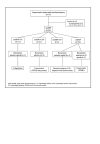Satisfactory medium-long term patient reported outcomes after laparoscopic single-mesh sacrohysteropexy
- PMID: 35781110
- PMCID: PMC10191707
- DOI: 10.52054/FVVO.14.2.017
Satisfactory medium-long term patient reported outcomes after laparoscopic single-mesh sacrohysteropexy
Abstract
Background: There is scarce information on the effectiveness of the laparoscopic single mesh sacrohysteropexy (smSHP). Attachment of a single sheet of flat mesh posteriorly to the cervix provides less mesh use and a less invasive distal mesh fixation.
Objectives: To assess medium to long-term follow-up results of patients who underwent laparoscopic smSHP utilising a less invasive technique with single sheet flat mesh.
Materials and methods: In the present retrospective cohort study, the data of 71 women who underwent laparoscopic smSHP for apical uterine prolapse with or without colporrhaphy (anterior and/or posterior) at the urogynaecology unit of a university hospital between January 2008 and January 2020 was reviewed. Data was collected on demographics, presenting symptoms, preoperative findings, surgery, and postoperative outcomes.
Main outcome measures: Medium to long-term patient-reported outcomes.
Results: The median age of the study population was 44 years. Median follow-up duration was 5 years (1-12). Symptomatic recurrence over time and repeat surgery rates were 13.1% and 3.1% respectively. Comparison of the pre-operative and medium to long-term evaluation scores of the pelvic floor distress inventory-20 (PFDI-20) and assessment of the patient global impression of improvement (PGI-I) revealed long-standing improvement in pelvic floor dysfunction.
Conclusions: Laparoscopic smSHP appears to be successful and safe with low recurrence and complication rates and provides satisfactory patient reported outcomes.
What's new?: Medium to long-term patient-reported outcomes based on PFDI-20 and PGI-I surveys are satisfactory following smSHP.
Conflict of interest statement
Figures


Similar articles
-
Comparison of patient reported outcomes, pelvic floor function and recurrence after laparoscopic sacrohysteropexy versus vaginal hysterectomy with McCall suspension for advanced uterine prolapse.Eur J Obstet Gynecol Reprod Biol. 2020 Apr;247:127-131. doi: 10.1016/j.ejogrb.2020.02.017. Epub 2020 Feb 14. Eur J Obstet Gynecol Reprod Biol. 2020. PMID: 32092668
-
Laparoscopic sacrohysteropexy versus vaginal hysterectomy and apical suspension: 7-year follow-up of a randomized controlled trial.Int Urogynecol J. 2022 Jul;33(7):1957-1965. doi: 10.1007/s00192-021-04932-6. Epub 2021 Aug 23. Int Urogynecol J. 2022. PMID: 34424347 Free PMC article. Clinical Trial.
-
[Mid-term efficacy of laparoscopic sacral colpopexy of combined transabdominal-transvaginal approach in the treatment of stage Ⅳ pelvic organ prolapse].Zhonghua Fu Chan Ke Za Zhi. 2019 Mar 25;54(3):160-165. doi: 10.3760/cma.j.issn.0529-567x.2019.03.004. Zhonghua Fu Chan Ke Za Zhi. 2019. PMID: 30893716 Chinese.
-
Uterine preservation vs hysterectomy in pelvic organ prolapse surgery: a systematic review with meta-analysis and clinical practice guidelines.Am J Obstet Gynecol. 2018 Aug;219(2):129-146.e2. doi: 10.1016/j.ajog.2018.01.018. Epub 2018 Jan 17. Am J Obstet Gynecol. 2018. PMID: 29353031
-
Guideline No. 413: Surgical Management of Apical Pelvic Organ Prolapse in Women.J Obstet Gynaecol Can. 2021 Apr;43(4):511-523.e1. doi: 10.1016/j.jogc.2021.02.001. Epub 2021 Feb 3. J Obstet Gynaecol Can. 2021. PMID: 33548503
References
-
- Balkanlı Kaplan P, Sut N, Kahyaoglu Sut H. Validation, cultural adaptation and responsiveness of two pelvic-floor-specific quality-of-life questionnaires, PFDI-20 and PFIQ-7, in a Turkish population. Eur J Obstet Gynecol Reprod Biol. 2012;162:229–233. - PubMed
-
- Betschart C, Cervigni M, Contreras Ortiz O, et al. Management of apical compartment prolapse (uterine and vault prolapse): a FIGO Working Group report. Neurourol Urodyn. 2017;36:507–513. - PubMed
-
- Daniels S, Robson D, Palacz M, et al. Success rates and outcomes of laparoscopic mesh sacrohysteropexy. Aust N Z J Obstet Gynaecol. 2020;60:244–249. - PubMed
LinkOut - more resources
Full Text Sources
